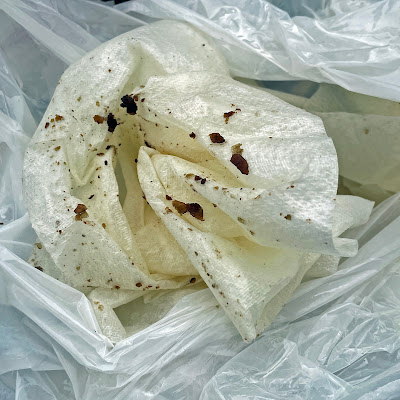The rubber hose connecting the Campingaz cylinder had to be replaced because it was a few months from being time expired and when I last changed the cylinder the end was not looking to be in good condition. This was rather earlier than it should have been, it was replaced after I bought the boat it having been picked up on the survey as time expired, then I found that the new hose was already almost 2 years old so now it was almost out of life.
The gas regulator was also looking ropey and when I checked up it has a 6 year replacement life (5 years is more common and 10 years the maximum quoted by The Cruising Association technical team). I couldn't see a date on it but as I have had the boat for 8 years it was clearly time to replace it, also the previous hose had been over ten years old when replaced and I would have thought you wouldn’t install a new premium regulator without replacing a cheap piece of rubber hose.
As both were in need of replacement I decided I might as well do the job properly and fit both an automatic shut off valve that closes if the gas flow it too high or pressure is low indicating a leak in the system plus a remote gas valve close to the cylinder, both are in the vented gas locker so that when the cooker is not in use all of the pipe work inside of the boat and the cooker is isolated at the press of a button.
The remote gas valve is only open when power is applied so turning off the domestic power will isolate the gas when leaving the boat even if the local "gas on" switch is left on. That switch is illuminated when on as a reminder to turn it off when not using the cooker. It also saves bending down to reach the manual gas cock.
 |
| I also have a hand held detector for tracking down suspected leaks and false alarms from other sources. All should have one! |
 |
| A little cramped but it works and with a longish bit of hose getting the cylinder in and out is no problem. |







